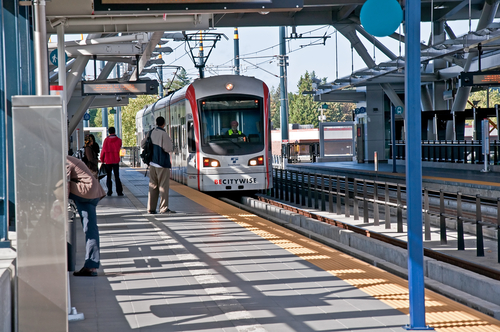A plan to send an Amtrak bullet train via a proposed 18-mile tunnel under Long Island Sound is picking up steam – in order to provide European-style fast railroad service between Boston and Washington, D.C.
The train would not just travel quickly, but link key locations, encourage economic development and lessen pollution, advocates claim.

Image via Shutterstock
For instance, on its way to Boston, the proposed train would leave New York City, stop near Kennedy International Airport, then continue on Long Island, stopping near the research-rich Stony Brook University – before heading into Connecticut. It would stop in New Haven (home to Yale University) and other locations, including Tolland, which is close to the rapidly expanding main campus of the University of Connecticut and the popular casinos located on nearby Native American reservations. It would then follow 1-84 to make its way to Worcester and Boston, MA.
The portion of the high-speed train service between New York City and Hartford, Conn., would cost about $20 billion to construct, according to the University of Pennsylvania's high-speed rail design studio. Overall, the full 450-mile route from Washington, D.C., to Boston would cost about $100 billion, PennDesign added.
On the other hand, an alternative plan from Amtrak would not have a tunnel under Long Island Sound and would cost a far more expensive $151 billion.
PennDesign has called for public-private financing for the project. Amtrak's proposal has yet to specify where funding will come.
Both Democrats and Republicans in Congress appear sympathetic to building some kind of a fast passenger train service on the Northeast corridor, according to news reports.
Republicans point out that the Northeast corridor is busy, which may make it economically viable, and they want involvement from the private sector in the project.
In 2011, Amtrak saw about 11 million passengers on the Northeast corridor. There are projected increases in passengers over the next three decades. With high speed service, the Northeast corridor could triple annual Amtrak ridership -- with over 55 million annual riders three decades from now.
Reports add that the high-speed rail service, much like what Europe has, would need two dedicated tracks. The trains would travel at 220 mph. There would not be sharp curves or grade crossings.
President Obama announced high-speed rail plans in 2009. But in November, Congress rejected Obama’s six-year, $53 billion budget for high-speed rail service.
Then in June, Amtrak unveiled a $150 billion plan to improve the Northeast corridor. On the opposite coast, the California Legislature in July approved spending $5.8 billion to begin building a 220 mph line, starting in the Central Valley region.
Overall, what is evolving is a far less ambitious plan than what Obama wanted: 13 high-speed rail corridors in 31 states.
So far, Congress has not approved new spending for high-speed rail, though that may change in a few years.
Close to $10 billion was previously approved under the 2009 federal economic stimulus act, for high-speed rail and "higher performance" rail. So far, about $1.5 billion of the $9.6 billion has been spent – with another $7.5 billion to be spent by 2017.
There are concerns being voiced by conservative critics, not just about the cost, but that the Obama plan is not cutting edge.
"The problem with Obama's high-speed rail is that it's an obsolete technology that doesn't make sense today," Randal O'Toole, a senior fellow at the Cato Institute, told the Christian Science Monitor.
“Just because other countries built this and are driving themselves into bankruptcy doesn't mean we should," he added.
Still, the proposed high speed rail service will cut travel times in half, with one-and-a-half-hour service between New York and Washington, D.C., and one-hour-45-minute service between New York and Boston.
Taken as a whole, the Northeast corridor is the sixth-largest economy in the world, with a GDP of $2.59 trillion and a population of nearly 50 million. By 2050, the region is projected to grow to 70 million people with a $7 trillion GDP.
Among Amtrak’s current services, the Acela Express is the fastest, with an average speed around 70 miles an hour. The Acela can get passengers from Washington, D.C. to New York in two hours and 45 minutes and from New York to Boston in three and a half hours. Currently, many business travelers like that they board the train in a downtown section of a city and depart in the downtown of another city. That makes it easier for travelers than heading to airports, often located a distance from city centers.
Edited by
Brooke Neuman